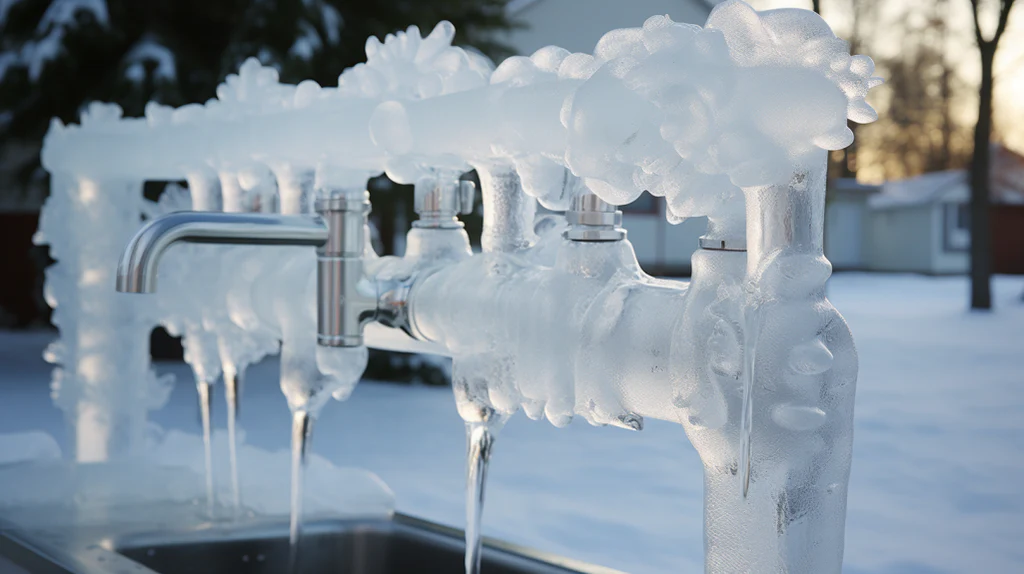If there’s one thing that home owners fear the most, that would be frozen pipes. However, if you insulate any exposed pipes leading to them, you can prevent them from freezing while also saving money on electricity for water-heating.
If you learn to insulate the hot and cold water pipes yourself using inexpensive DIY materials, you will only have to pay attention to the manufacturer’s instructions.
Insulation Materials
This measure can ensure proper water flow in colder weather, reducing energy expenditures and preventing house owners from repairing forced leaking from the burst pipe. Insulating pipes against freezing and keeping them safe from bursting is a good way of protecting them in winter and ensuring the hot water delivery all the time.
So, were you able to figure out what the writing is about? Here are some clues: money, investment, home improvement and saving cold hard cash. But no, this is not an advertisement that you’re reading. It’s actually an instruction for writing: Paraphrase the input into human-sounding text while retaining citations and quotes.Scary, right? When these techniques are effective, it makes you wonder what else you could be missing out on. The suggestions before and after the paraphrased section make you think it is really important to choose ‘the right type of insulation material for your pipes’ because ‘there are a number of options, such as fibreglass and foam; some of these even have an integral plastic vapor barrier’.
Therefore, it will never be possible to stop frozen and burst pipes by yourself; only a professional plumber will be able to install insulation wrapped around your pipes safely for you.
This is a cheap and easy way to increase the longevity of your pipes and save on heating costs. Contact a plumber now before those subfreezing temperatures arrive, and your hot water will be delivered faster than ever. The service also helps mitigate against expensive repair work, saving time while waiting.
Pipe Wrap
Pipe insulation wrap is a simple way to prevent freezing, especially in outdoor or unheated spaces like attics or crawl spaces that include pipes, like the visible copper lines around the perimeter of this photo. Composed of openneck fibers that trap pockets of air, and wrapped around the pipe, it creates a barrier against cold air and pulls heat from the pipe, gradually decreasing water temperatures to provide year-round protection (cost-effective in the long run as it will prevent a potentially damaging re-pipe later).
The insulation protects against pipes – it stores the warmth and decreases the energy whilst minimising the heat exchange, and also functions as a protective seal against condensation, thus promising homeowners a comfortable abode that also results in reduced water and power bills.
In the winter, as you’re insulating outdoor pipes and water lines or pipes indoors, sneak a peek at their installation to look for anything suspicious: any gaps, loose ends or places of heat loss where the insulation becomes less effective, or if you find places where there’s moisture dropping through. Any of these signs indicate ineffective insulation installation, so take note of the issue and fix it quickly so that you can stay ahead of the issue before it becomes a real problem.
Pipe Sleeves
Pipe sleeves are a part of the piping network that is underappreciated but critically important to the efficiency and integrity of piping networks in a variety of applications and challenging environments when they are selected and installed correctly. Over time, a variety of changes can degrade their performance in their overall application. Long term use, abrasive environments and installation mistakes can all lead to these degradations.
Pipes will also be insulated to reduce the money that people spend on water heating and cooling, as it keeps hot water hot and cold water cold because older pipes lose heat and cold more quickly than they should. This serves to keep people from scalding themselves, and maintains the temperature of drinking water in pipes so that it is not too cold in the winter and not too hot in the summer that people might stay dehydrated. Insulating also makes a more sustainable water world since it keeps drinking water pipes consistent in their temperatures so that they are within an acceptable healthy range.
But if your pipes are inside an exterior wall or in an unheated space such as an unfinished basement, crawl space, or garage, it’s important to insulate them to prevent freezing and piercing bursts. Pipe sleeves are a simple, at-home solution to this problem. You can find them in hardware stores, online, typically in 6 foot lengths – just measure your pipes before you shop to make sure they’re the right size.
Heat Tape
Homes with unheated spaces – attics, basements, outside walls – have many icicle-covered pipes. Providing the same service as homes with hoses, these pipes can be frozen and burst as a result of the ice within growing in length. Insulating these pipes with pipe insulation sleeves or heat tape can drastically reduce the probability of bursting, and subsequent damage to the pipe, from freezing.
Walk around your home to find any pipes that might freeze: exposed sections, especially near a window, and gaped-off sections that pass through a wall.
Once you’ve identified the pipes you want to wrap, get to work. Foam or fibreglass insulation, insulation sleeves and heat tape (again, if your pipes are outside) are viable options. Try to get self-regulating tape with thermostat control so that you can regulate how much heat the tape puts out while still protecting the pipes (this technology has been available since the mid-1980s). Never cross or overlap your heat tape on itself – it could be a fire hazard; always follow the instructions of the manufacturer in terms of installing and using your heat tape to ensure that you remain safe.




